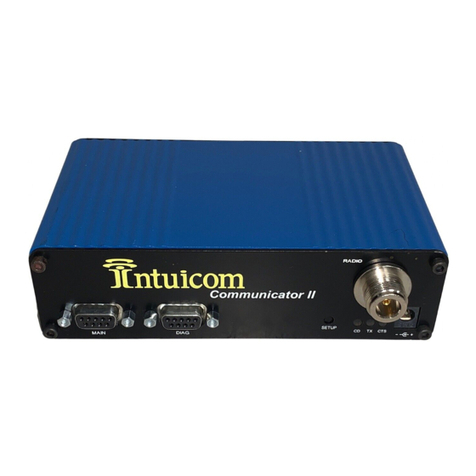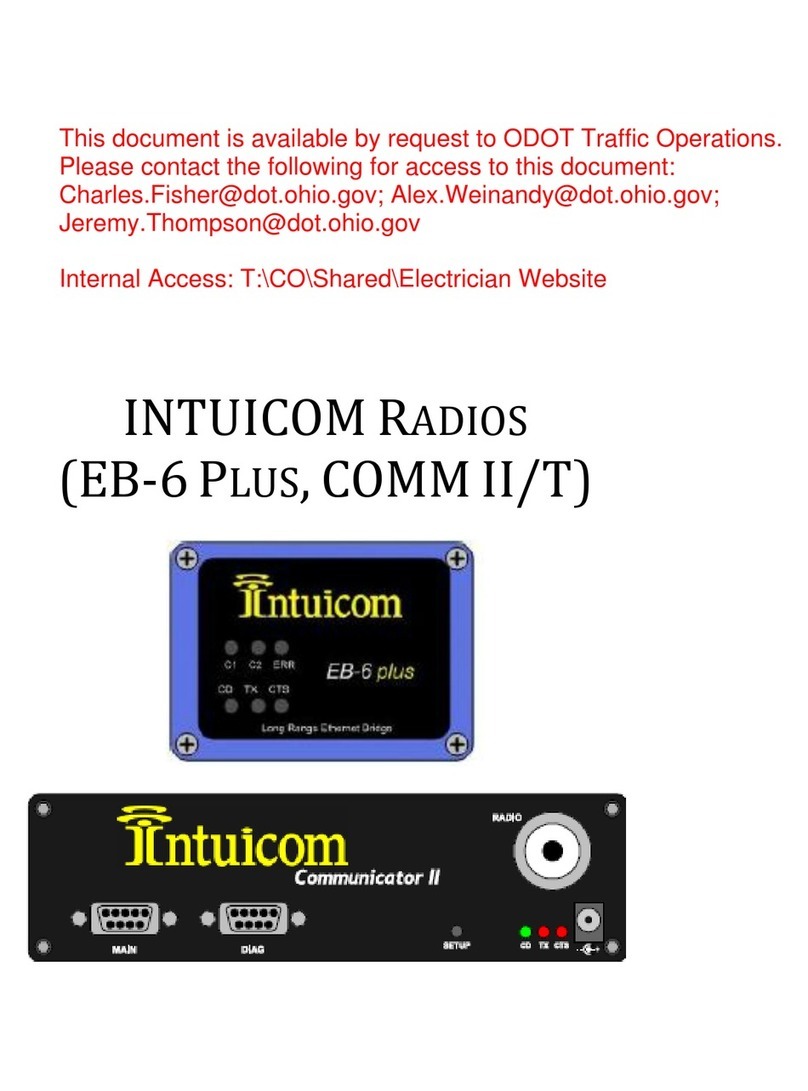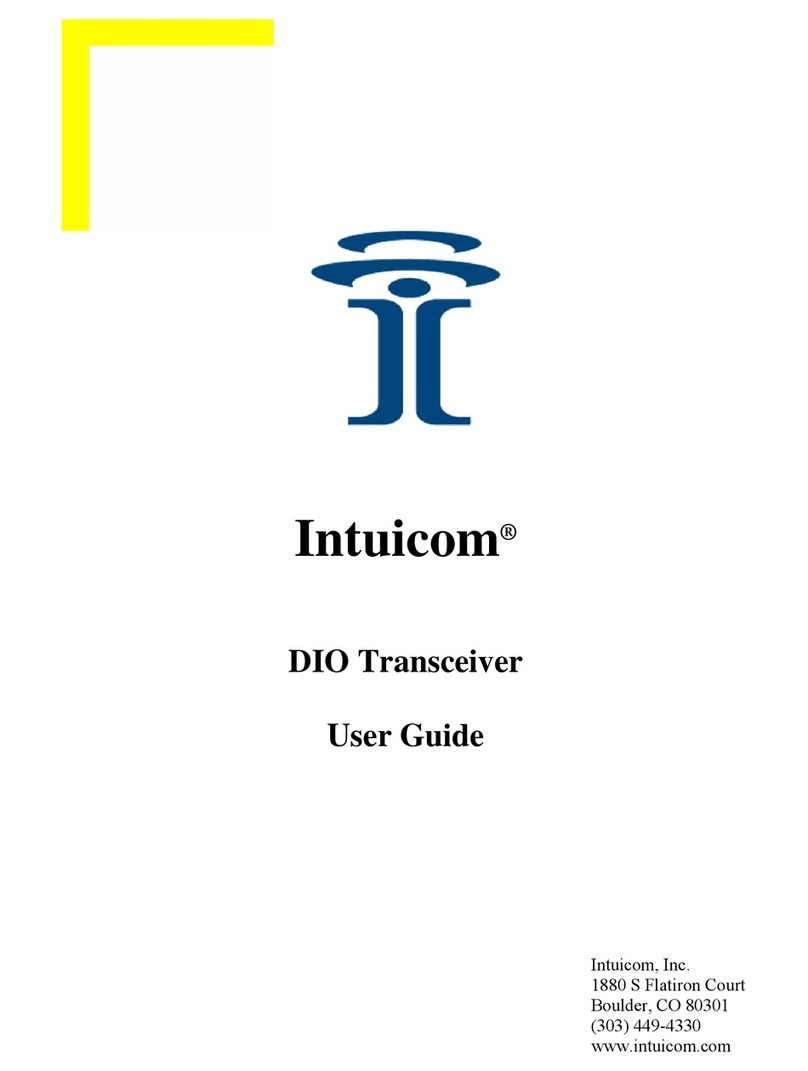
Intuicom CommunicatorTM User Manual
Revision A © 2001 Intuicom, Inc. iii September 2001
Table of Contents
1Quick Start............................................................................................................................. 1
2Quick Start on a Multipoint System.................................................................................... 2
3Tuning Transceiver Performance........................................................................................ 3
4Operation Mode Selections................................................................................................... 6
4.1 (0) Point-to-Point Master................................................................................................ 6
4.2 (1) Point-to-Point Slave .................................................................................................. 6
4.3 (2) Point-to-Multipoint Master........................................................................................ 6
4.4 (3) Point-to-Multipoint Slave .......................................................................................... 6
4.5 (4) Point-to-Point Slave/Repeater................................................................................... 7
4.6 (5) Point-to-Point Repeater............................................................................................. 7
4.7 (6) Point-to-Point Slave/Master Switchable ................................................................... 7
4.7.1 Using Mode 6 to call a transceiver not listed in the Call Book............................... 9
4.8 (7) Point-to-Multipoint Repeater .................................................................................... 9
5Multipoint Operation.......................................................................................................... 10
5.1 Theory of Operation...................................................................................................... 10
5.2 Installing Multipoint Systems........................................................................................ 10
5.3 Overlapping Multipoint Systems ................................................................................... 11
5.4 Setting Multipoint Parameters ...................................................................................... 11
5.4.1 (0) Number Repeaters ........................................................................................... 11
5.4.2 (1) Master Packet Repeat ...................................................................................... 11
5.4.3 (2) Max Slave Retry .............................................................................................. 13
5.4.4 (3) Retry Odds....................................................................................................... 13
5.4.5 (4) DTR Connect................................................................................................... 14
5.4.6 (5) Repeater Frequency ......................................................................................... 14
5.4.7 (6) NetWork ID ..................................................................................................... 15
5.4.8 (8) MultiMaster Synch .......................................................................................... 15
5.4.9 (9) 1 PPS Enable/Delay......................................................................................... 15
5.4.10 (A) Slave/Repeater ................................................................................................ 16
5.4.11 (B) Diagnostics...................................................................................................... 16
5.4.12 (C) Subnet ID ........................................................................................................ 16
5.4.13 (D) Radio ID.......................................................................................................... 19
6Baud Rate Selections........................................................................................................... 20































